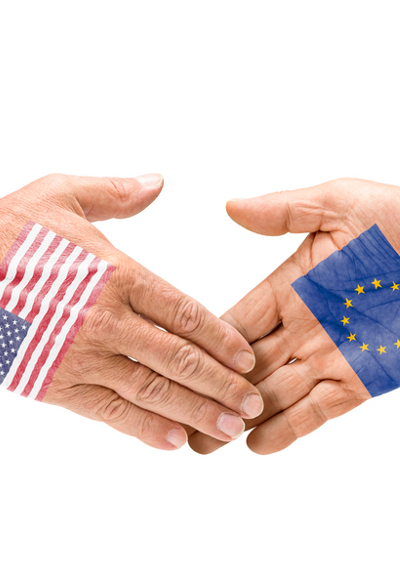Cosmetics: Sunscreens Made in Europe
A close-up on the complexities of the TTIP trade negotiations
May 20, 2014

The TTIP negotiators risked getting sunburned when they gathered outside of Washington to start the fifth round of negotiations for a Transatlantic free trade agreement on Monday, May 19. But the representatives from the EU might have had better protection if they had brought sunscreen in their luggage instead of buying it upon arrival.
The Environmental Working Group, which independently evaluates health benefits and risks of skin care products, has long warned that sunscreens available in the United States offer worse protection against the dangerous UVA rays that don’t cause acute sunburn, but long-term damage to the skin.
The superior filters used in many European sunscreens (Mexoryl and Tinosorb) are not available in the United States since the federal Food and Drug Administration (FDA) has not approved the ingredients that experts on both sides of the Atlantic deem to be the most effective.
These experts also agree that safety concerns are not what is holding the FDA back, but its own procedures.
EU exporters and American manufacturers would like to see these substances approved in the United States sooner rather than later. The trade organizations Cosmetics Europe and the Personal Care Products Council fight side by side for the goal that “the U.S. should recognize EU positive list materials (eg. UV filters).”
Never-ending complexity
The regulation of sunscreen may not be at the top of the priority list for the TTIP negotiators. But it is a good example of the herculean task of trying to harmonize regulations for chemicals, pharmaceuticals or cosmetics on both sides of the Atlantic.
For starters, it is not even clear under which category sunscreen falls. Just like fluoride toothpaste and antiperspirants, it is considered a cosmetic product in the EU. But due to their active ingredients, all three products are categorized as over-the-counter-drugs in the United States. For drugs, however, the regulatory approval process is longer and more cumbersome.
European regulations create confusion for manufacturers in other areas. According to Thomas Hartung, a toxicologist at Johns Hopkins University in Baltimore, not even European cosmetic companies know what the EU’s Chemical Directive REACH will mean for their business.
Under REACH, the risks of all chemicals have to be re-evaluated, and that also applies to ingredients used in many cosmetics.
Animal testing
The EU ban on animal testing (whose last stage went into force this year) in the cosmetics industry presents another headache to manufacturers from the United States where the practice is not forbidden.
The industry on both sides has moved away from animal tests, but companies now urge their governments to harmonize alternative testing methods and to allow some flexibility for areas where such methods are not yet available, such as long-term toxicological tests for hair dye.
Just how much work lies ahead becomes clear in the paragraph on labeling in the cosmetic industry’s joint submission to the Working Group.
The manufacturers urge the United States to allow the term “aqua” on labels, instead of forcing importers to translate it to “water.” Their explanation: “This requirement is a costly and very unnecessary exercise given the total lack of a health risk from using this ingredient.”
Lobbying efforts
Dermatologists would argue that the filters in sunscreens are a more serious case. It seems as though the TTIP negotiations have helped to move the debate in the United States.
According to the Washington Post, European manufacturers of the chemical ingredients such as BASF have lobbied Congress, and lawmakers are discussing ways to speed up the FDA approval process for over-the-counter-drugs.
And if an EU delegate really forgets to bring sunscreen: The French cosmetics giant L’Oreal is the only European manufacturer that managed to get FDA approval for a few products in its pricier lines Lancome and La Roche Posay that contain Mexoryl. The safest and cheapest option might just be to stay inside the conference center and focus on the talks.
Takeaways
European sunscreen is considered a cosmetic product in the EU but an over-the-counter drug in the US.
The EU’s Chemical Directive REACH requires re-evaluation of all chemicals, including in cosmetics.
The EU has a ban on animal testing but the US does not.
The US Food and Drug Administration has not approved ingredients that experts deem most effective in sunblocks.
The US requires the European cosmetic manufacturers to translate “aqua” to “water,” a costly exercise.

